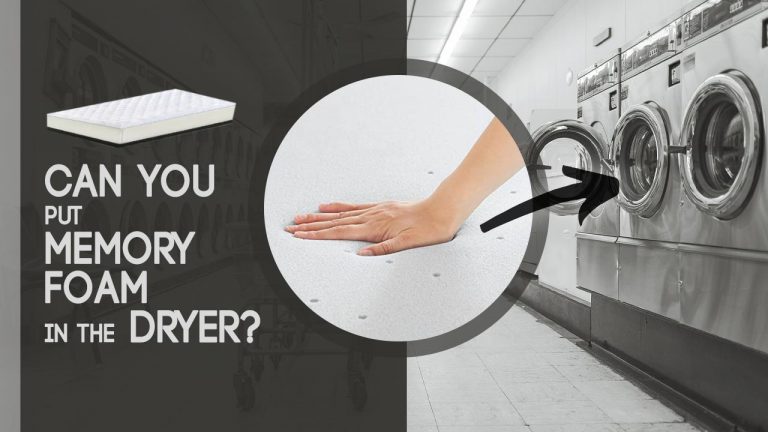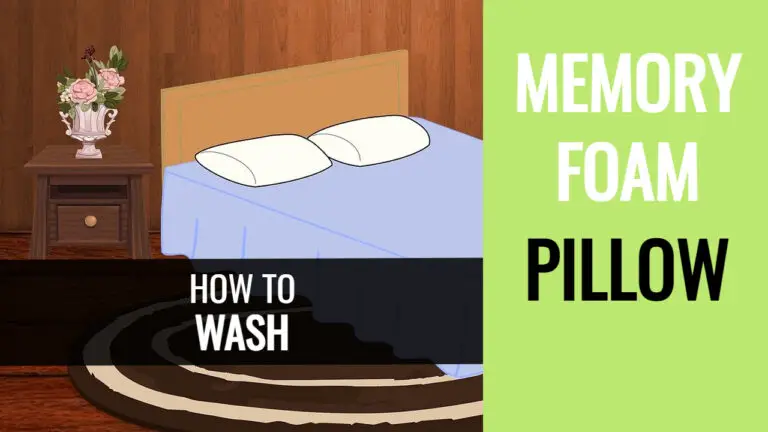Do Dust Mites Get into Memory Foam? How Long Do They Live in A Mattress?
Traditional mattresses such as springs unfortunately are not a safer option for people when it comes to the issue of allergens and dust mites. These spring/coil mattresses provide a breeding ground for dust mites and other kinds of allergens.
The reason why people are opting for memory foam mattresses and accessories is to minimize the risk associated with dust mites and pathogens. This is because memory foam as a raw material is viscoelastic or low-resistance polyurethane foam.
The viscos-elastic feature of memory foam cannot be easily penetrated by dust mites. Again, the structure is dense making it tough for dust mites to thrive. Most often the material proves to be a cleaner and healthier bedding material option.
However, nothing stops the tiny bugs from assembling on the top of the mattress including memory foam. the disparity lies only on their level of presence on different materials.
Although memory foam is seen as a dust-resistant matter, still, one needs to maintain a regular cleaning routine.
Do Dust Mites Get into Memory Foam?
People spend more than one-third of their lives on mattresses and pillows. So, you should probably give your sleep essentials the attention they deserve. The task becomes even more challenging if you don’t know what’s lurking beneath your sheets.
Regular cleaning of your mattress, pillows and cushions to remove dirt, allergens and dust mites is very important for the safety of your health.
It also helps to keep your expensive and premium memory foam mattresses in good condition and provides them with an extended life.
The most common questions that come up when you go shopping for new memory foam sleep accessories or if you already possess some are:
Can my expensive memory foam bedding essentials get damaged by dust mites and other allergens? What happens if dust mites enter inside memory foam?
Dust mites are a cause of concern if you or your loved ones are prone to allergies or suffer from asthma. Dust is the most allergenic substance found in homes and is composed of dead skin cells and fecal matter from dust mites.
Dust mites live on dead skin cells and dust that accumulates in your carpets and rugs and also on your bed. They are so tiny that you can even breathe them in without being aware of them. They can be a real nuisance and cause an allergic reaction in some people.
Most of us are asked to believe that dust mites cannot breed in the memory foam material. This is partially true as the closed-cell surface of the memory foam does not allow dust mites to get inside the mattress, but they can still live on the surface of the mattress.
All said and done, it is the surface of the mattress that comes in contact with your body. The density of the memory foam does not provide any room for the dust mites to thrive, so they remain on the surface instead.
Memory foam is a cleaner, healthier, and much more comfortable option as compared to spring mattresses but yes, dust mites can live on them, not inside them.
How Long Do Dust Mites Live in A Mattress?
Dust mites can be seen in every home as they occur naturally. Humidity plays a very important factor in determining the concentration of dust mites in a place.
Mattresses are the ideal place for dust mites as dead skin cells and perspiration provide them with food and humidity essential for their survival.
They are microscopic arthropods that take around 20 to 30 days to mature and can live for around 60 days on average.
How To Get Rid of Dust Mites from Memory Foam Mattresses?
Getting rid of dust mites is easier said than done. Although it is not an easy task to get rid of them completely, you can reduce their population considerably by using the following methods:
1. Use air purifiers and dehumidifiers
Dust mites thrive in humid conditions and if they don’t get a certain temperature they just die out. Use a dehumidifier to lower the humidity in your room to less than 40% and you will effectively reduce their population.
An air purifier can further reduce the allergens that may be floating around in the room.
2. Keep your home dust-free
Make a conscious effort to keep your home dust-free as far as possible. Regular dusting and cleaning will keep the problem in control. Vacuum your mattress every 4-6 months to keep it clean.
3. Steam cleaning
While you can get rid of dust mites in your bedding and linen by washing in hot water, you need a steam cleaner for your mattress. Steam cleaning is much better than dry cleaning and helps get rid of dust mites.
4. Use mattress covers
Dust mites need moisture to survive. Covering the mattress with a good quality mattress protector or cover limits your contact with the dust mites.
Besides, it cuts off their supply of food (dead skin cells) and moisture, gradually reducing their concentration. Wash the mattress cover in hot water every one or two weeks to keep it clean.
5. Keep your home and bed uncluttered
Remove all the old knick-knacks that you may have accumulated over time and are not being used now. Clutter gathers dust very quickly, so remove unnecessary items such as teddies and extra pillows on your bed to prevent the growth of dust mites.
6. Dry under the sun
Placing your memory foam mattress directly under the sun disinfects it naturally. This also prevents moisture from being trapped in the mattress which contributes to the growth and multiplication of dust mites.
Even after following this cleaning routine if the problem persists, then there are some DIY procedures that you can adopt to get rid of dust mites in your homes.
Effective DIY Methods to Get Rid of Dust Mites from Memory Foam Mattress
1. Chemical treatment
You can chemically treat your memory foam bedding to negate the existence of any type of pathogens.
Required Items:
Steps to Follow
- Use Baking soda (sodium bicarbonate). Take a cup of baking soda and add a few drops of any essential oil (it will add some sweet fragrance) to it.
- Sprinkle this soda across the entire top side of the mattress and wait for 15-20 minutes.
- Vacuum the mattress to suck up all the baking soda. The dust mites are removed along with the baking soda.
- Repeat the same procedure on the other side of the mattress.
2. Vacuuming
Ideal for removing dust mites, bacteria, and viruses.
Procedure:
- Place the memory foam on a flat surface or floor.
- Vacuum the mattress across the top to suck up all the dust mites and allergens.
- Flip the mattress over and vacuum the other side as well.
- Repeat the process at least once a month to get rid of the dust mites.
3. Bug Sprays & Powders
There are some bug and Mite Killer spray and special powders available online for the bed bug, flea, earwig, cricket, millipede and centipede control.
Procedure:
- Remove the mattress cover , bedsheets and other coverings above the mattress.
- Apply Premo Bed bug and mite killer spray directly to the mattress and leave it to air for some time. It is made of natural insecticides that do not have any harmful fumes or scents.
Alternatively, Diatomaceous Earth is a fine powder made from silica that can be sprinkled where dust mites live to kill them instantly.
Follow these steps for its effective use:
- Remove the fitted sheets, mattress covers from the bed.
- Sprinkle the Diatomaceous earth powder on the mattress and leave for a few hours.
- Vacuum the mattress to suck up all the dust mites.
- Flip the memory foam mattress and repeat the process.
| Photo | Product | Buy |
|---|---|---|

|
Safer Home SH51703 OMRI Listed Diatomaceous Earth - Ant, Roach, Bedbug, Flea, Silverfish, Earwig, & Crawling Insect Killer | Check Price On Amazon |
4. Use Tea tree and Eucalyptus oil
Tea tree and Eucalyptus oil have anti-bacterial and anti-fungal properties and are used in disinfecting almost anything. Procedure to be followed:
- Take about two teaspoons of organic tea tree oil and mix it with an equal amount of organic eucalyptus oil and two cups of distilled water.
- Pour this mixture into a bottle and spray it in your bedroom and on the mattress.
- This will kill dust mites and any other allergens.
- Spray this mixture every other day to get rid of dust mites.
Final Words:
Irrespective of how immaculately kept your home, dust mites reside in almost all bedding material such as pillows, mattresses, sheets, comforters, etc.!
Dust mites breed prolifically wherever dust gathers. The obvious solution is to limit dust and other favorable conditions that help them survive.
Well! We have tried to guide you with some best strategies to deal with this problem.
Following a rigid cleaning schedule can limit their numbers to a great extent. Regular vacuuming, airing, and dusting can reduce their numbers to a great extent.
There is no way to entirely get rid of dust mites in all your sleeping accessories. Using the above-mentioned suggestions can help you get rid of these unwanted friends to a great extent.











